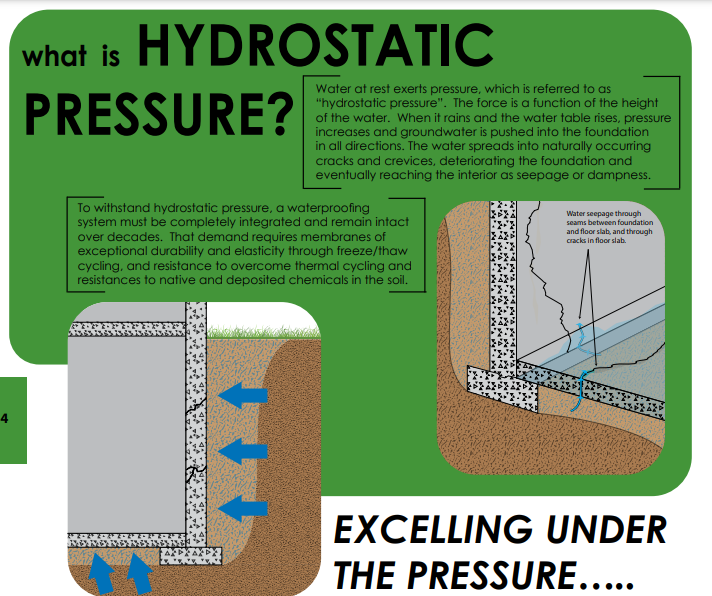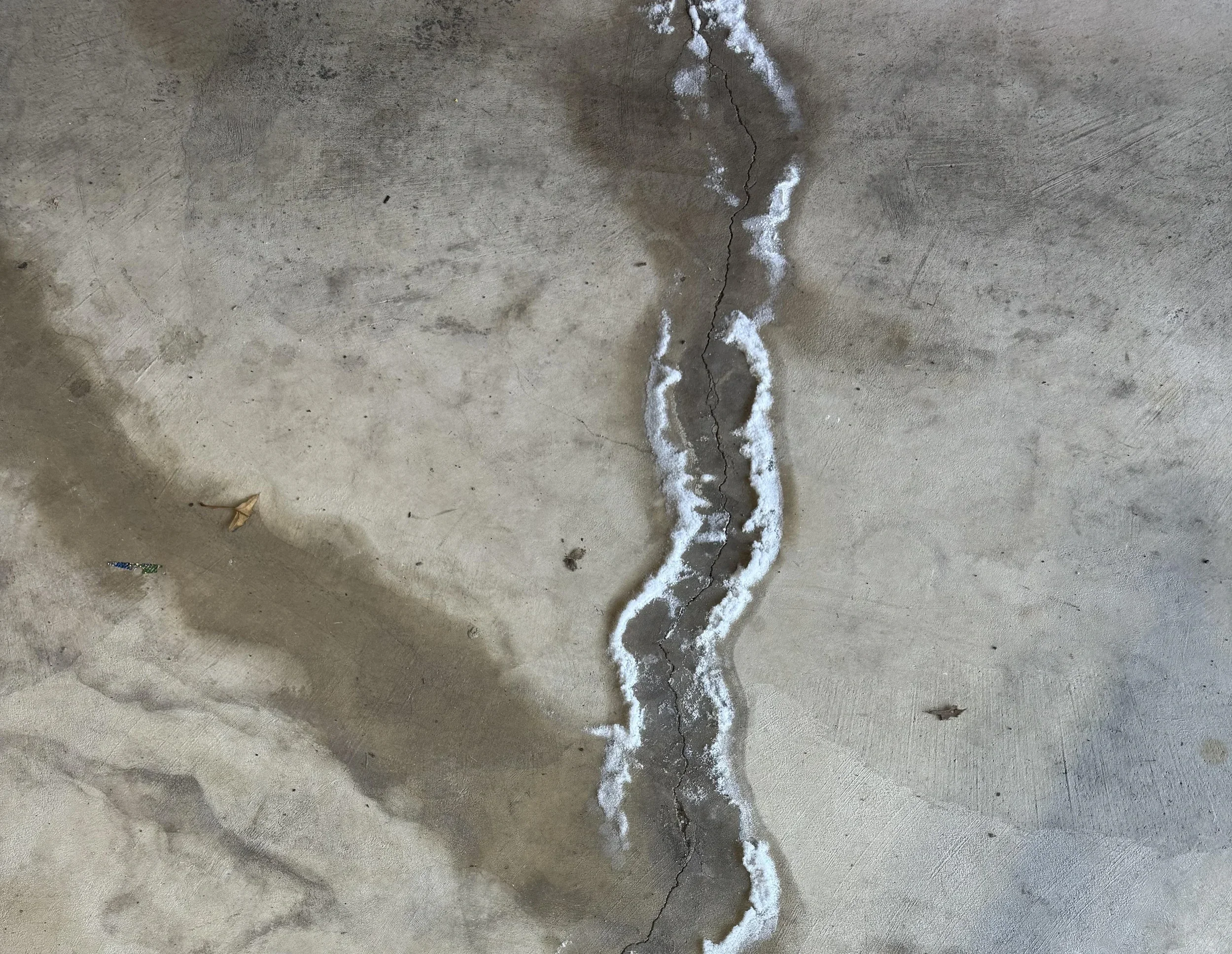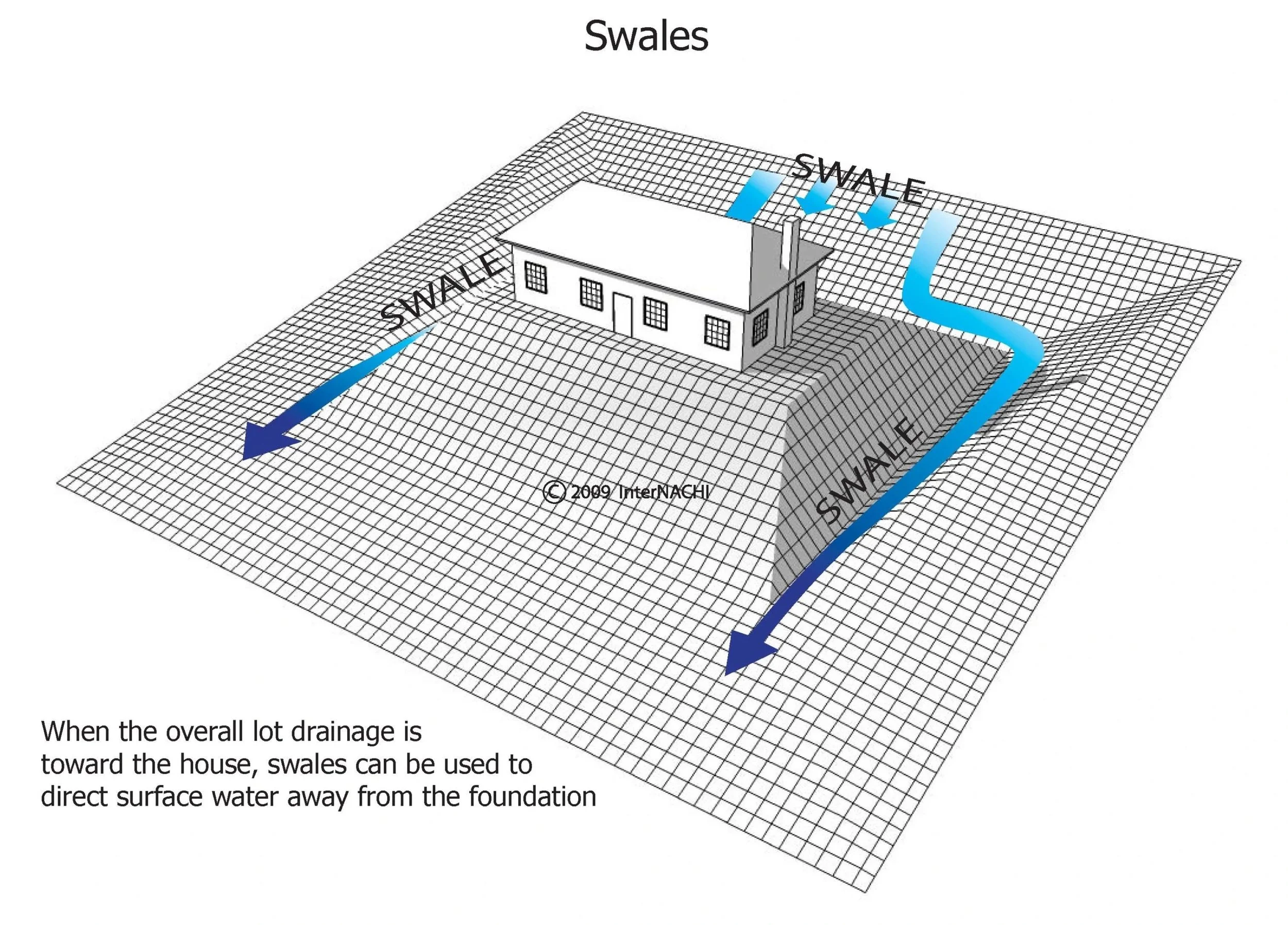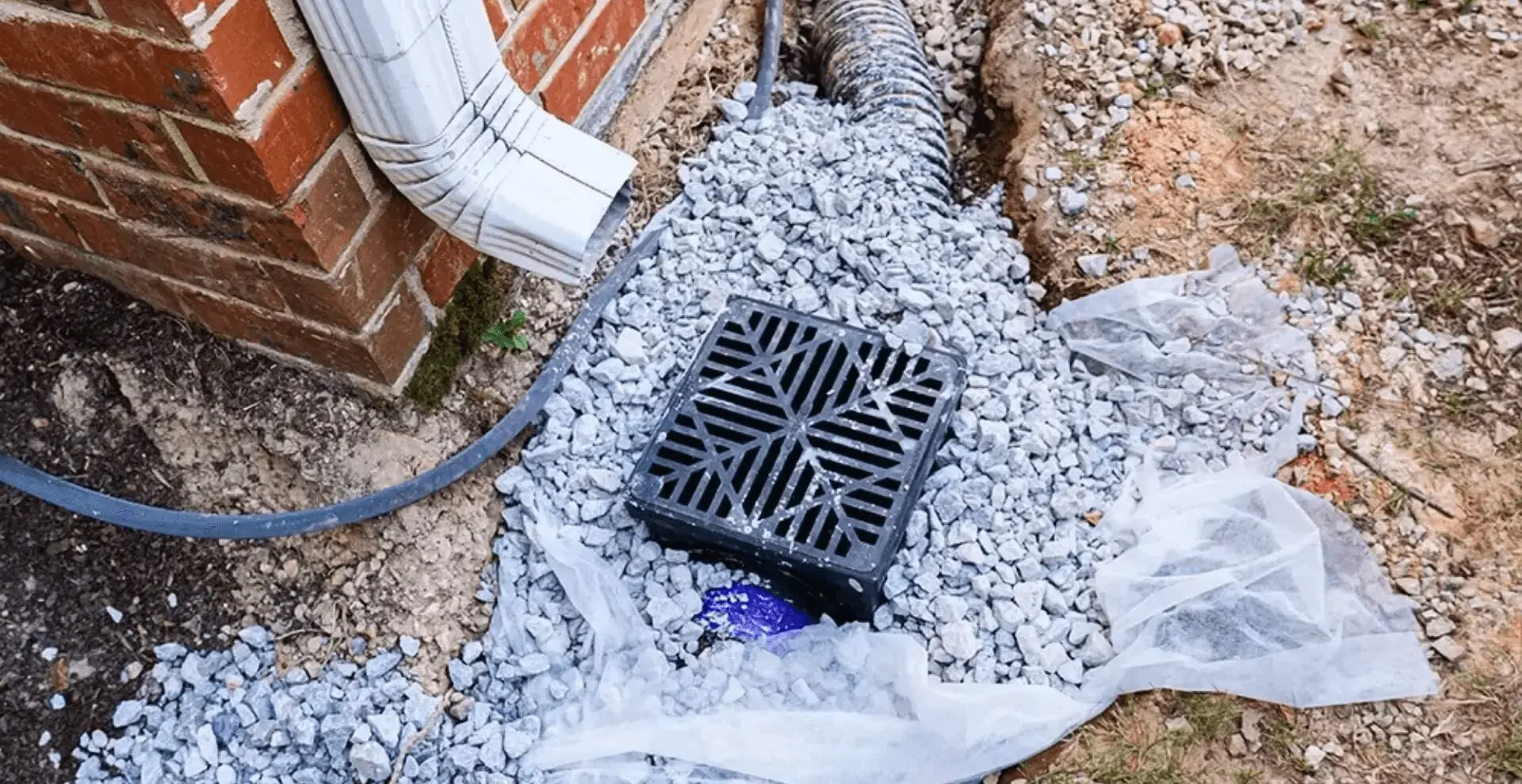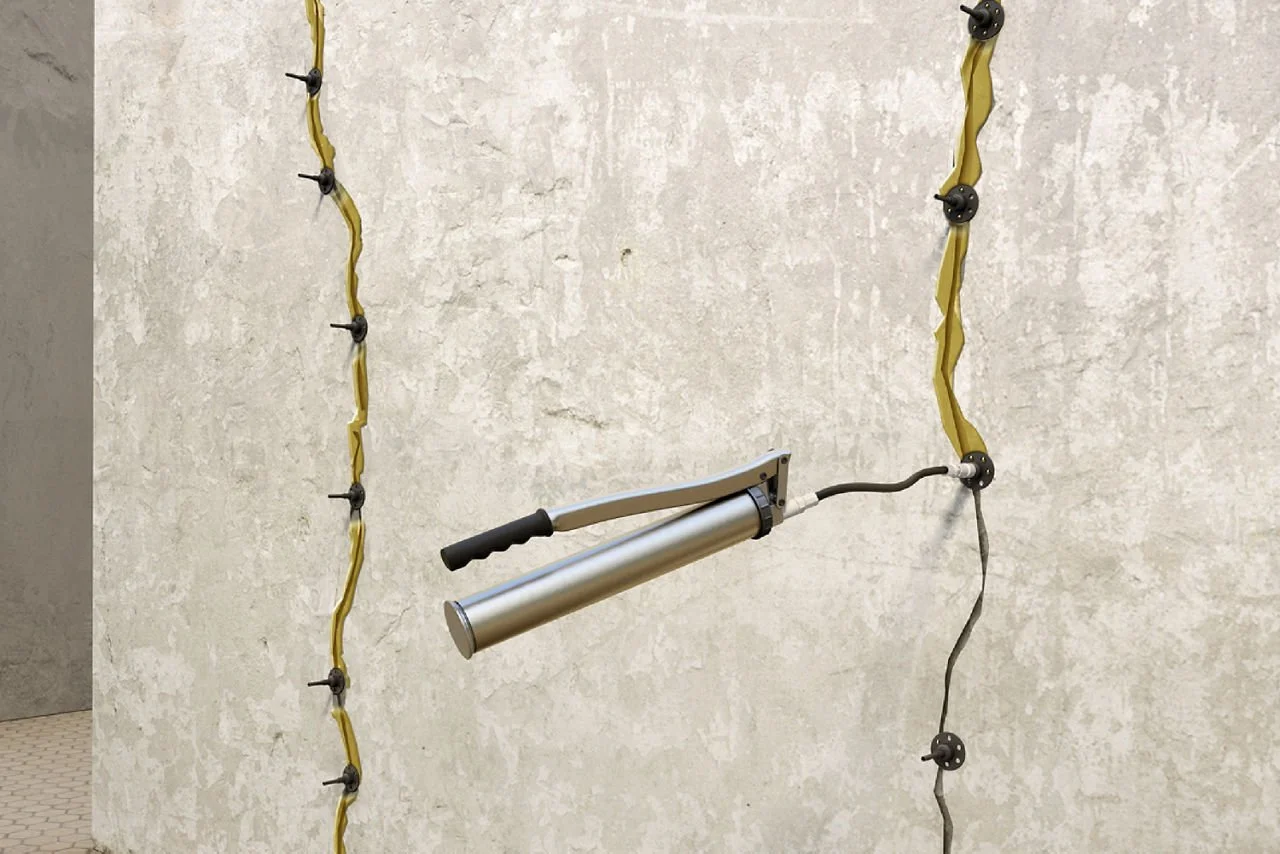Why is water coming up through my concrete floor?
Discovering water coming up through your concrete floor can be alarming. Whether you’re a homeowner with a damp basement or garage, a builder or a property manager, the sight of water seeping through what should be a solid, impenetrable surface raises serious concerns. The good news? You're not alone—and this issue is both common and solvable.
In this article, we’ll explore why water rises through concrete floors, how it affects both residential and large-scale properties, and the full range of remediation options—both structural and environmental—to stop it from happening again.
What Causes Water to Come Up Through Concrete Floors?
Water entering through a concrete floor is typically a result of hydrostatic pressure—when groundwater builds up in the soil beneath the slab and exerts upward force. If there is no effective barrier in place, that water will find the path of least resistance—often upward through pores, joints, cracks, or defects in the concrete.
The 3 Most Common Causes:
High Water Table
Areas with shallow groundwater or seasonal rainfall can cause water levels to rise under your slab. This is particularly common in flood-prone zones or low-lying developments.Poor Drainage and Site Grading
If the land around your structure slopes toward the building rather than away from it, water runoff will collect near or under the slab.Lack of Waterproofing or Vapor Barriers
Older slabs and cost-cut construction often skip proper underslab membranes or moisture barriers. Even new builds can suffer if these barriers are punctured during installation.
Credit to https://www.inspectionworks.ca/ and https://cornellengineers.com.au/what-is-a-vapour-barrier-under-a-concrete-slab/
How It Happens in Different Settings
Residential Homes
In homes, water intrusion is most common in:
Basements
Ground-floor slabs
Garage floors
Moisture may enter through hairline cracks, joints between the slab and footing, or just migrate up through porous concrete. It’s often mistaken for condensation, but recurring puddles or soggy flooring are usually signs of intrusion from below.
Commercial and Industrial Properties
In large-scale projects, water ingress can affect:
Car parks and underground structures
Warehouse floors
Lift pits and services risers
In these cases, the consequences aren’t just cosmetic—they can lead to operational downtime, safety hazards, and structural degradation.
Immediate Signs to Look For
Dark, damp patches on the floor
Musty odour
White crystalline residue (efflorescence)
Bubbling or peeling floor coatings
Wet carpet or flooring lifting at the edges
Rust stains from steel objects in contact with the slab
Remediation: Fixing the Problem at Its Source
Before jumping straight to concrete repair products, it’s important to understand why water is reaching your floor in the first place. Here are foundational strategies to manage water around and under your structure:
Credit to: https://www.inspectionworks.ca/, https://neighbourhoodplumbing.com.au/ and https://brisbanestructures.com.au/
1. Regrading the Natural Ground
Reprofile the landscape to slope away from the building
Use swales, mounds, or retaining walls to redirect surface runoff
Avoid hard landscaping (e.g., concrete paths) that directs water toward the structure
2. Improve Surface Drainage
Install perimeter drains or spoon drains to intercept water
Ensure gutter and downpipe discharge is managed effectively
3. Sub-Soil Drainage Systems
Install agricultural drains (aggie drains) around or under the slab
Use a geotextile sock to prevent blockage by silt
Connect sub-soil drains to a sump pump system where gravity fall isn’t possible
4. De-Watering and Pressure Relief
In extreme cases, pressure relief wells may be needed to lower the water table around the structure
Temporary pumping and drying may be required before repairs can begin
These external solutions address the root causes. Once you’ve mitigated water pressure, you can move on to repairing and waterproofing the slab itself.
Concrete Repair and Waterproofing Solutions
Once environmental controls are in place, here’s how to stop water from continuing to rise through the slab:
1. Surface-Applied Crystalline Waterproofing
Products like Penetron chemically react with moisture to grow crystals inside the concrete’s capillaries. These crystals block water paths, even if new microcracks form later.
Ideal for negative-side waterproofing (inside of basement walls, slab tops)
Permanent and reactivates with future moisture
Breathable—lets water vapor escape without blistering
Credit to penetron.com.au
2. Crack Injection and Joint Sealing
Inject polyurethane foam into active leaks or epoxy into dormant cracks
Re-seal joints with flexible sealants (e.g., polysulphide or polyurethane)
Apply water stops or bandages on high-pressure joints (lift pits, wall/floor junctions)
Credit to gbr.sika.com
3. Water based epoxy barrier coatings
Ideal for instances where rising damp is an issue as a pose to highly active leaks. Still withstands extreme hydrostatic pressure
Can be applied on damp surfaces or green (freshly placed) concrete
Penetrates into the concrete if applied in 2 coats to withstand negative pressure and seal any further moisture from coming through
Ardex WPM 300 is an excellent barrier coating system that if applied correctly will seal slabs and walls effectively to halt water ingress
Final Thoughts
Water coming up through your concrete floor is a symptom, not just a defect. The slab isn’t necessarily to blame—it’s often the site conditions, drainage, and lack of waterproofing that lead to the issue.
By taking a comprehensive approach—improving surface grading and subsoil drainage first, then implementing robust concrete repair methods—you can permanently resolve water ingress issues.
Whether you’re managing a leaking garage slab or an underground carpark under pressure, TruBond Concrete Repairs can assess the root cause and recommend a tailored solution.
Need professional help fixing water rising through your floor?
Book a site inspection with our team today—we’ll investigate, explain, and solve the problem properly.

